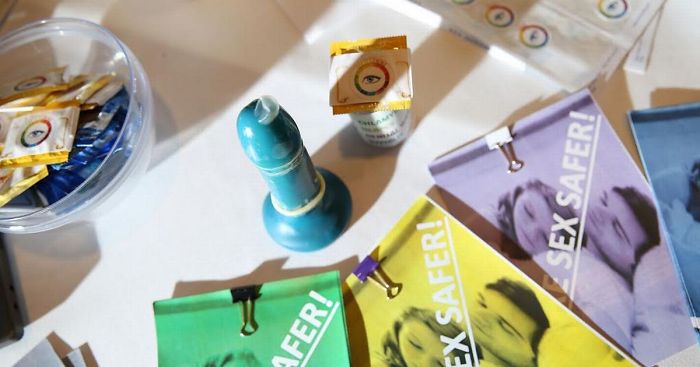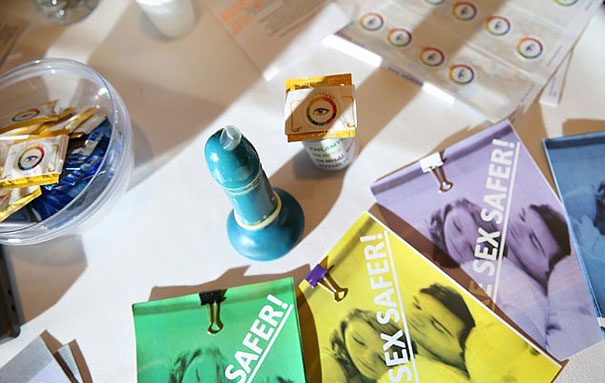
New Condom Will Change Colors If Someone Has An STI
The fact that someone has created a condom that can detect sexually transmitted infections (STIs) is amazing on its own, but the fact that it was invented by a team of 13- and 14-year-old students is even more impressive! Muaz Nawaz, Daanyaal Ali and Chirag Shah from the Isaac Newton Academy in London came up with the concept, calling it the ‘S.T.EYE.’
The condom glows faintly in different colors depending on what STIs it has encountered; green for chlamydia, yellow for herpes, purple for human papillomavirus, and blue for syphilis. They won the first prize (£1,000) for Health at TeenTech Awards, a competition that encourages 11-to-16-year-olds to create inventions that will help the world.
More info: teentech.com (h/t: eonline)
The S.T.EYE condom turns green for chlamydia, yellow for herpes, purple for human papillomavirus, and blue for syphilis
It was invented by 13-to-14-year-olds Muaz Nawaz, Daanyaal Ali and Chirag Shah from the Isaac Newton Academy in London
They won the top Health price at the Teen Tech Awards: £1,000 and a trip to Buckingham Palace!
The students’ design is currently just a concept, but we hope it becomes a reality!
76Kviews
Share on FacebookIf they had virus samples and the right protective equipment, there's no need for testing. Just inject the condomes directly with the virus and see if it glows.
Load More Replies...If they had virus samples and the right protective equipment, there's no need for testing. Just inject the condomes directly with the virus and see if it glows.
Load More Replies...





81
19